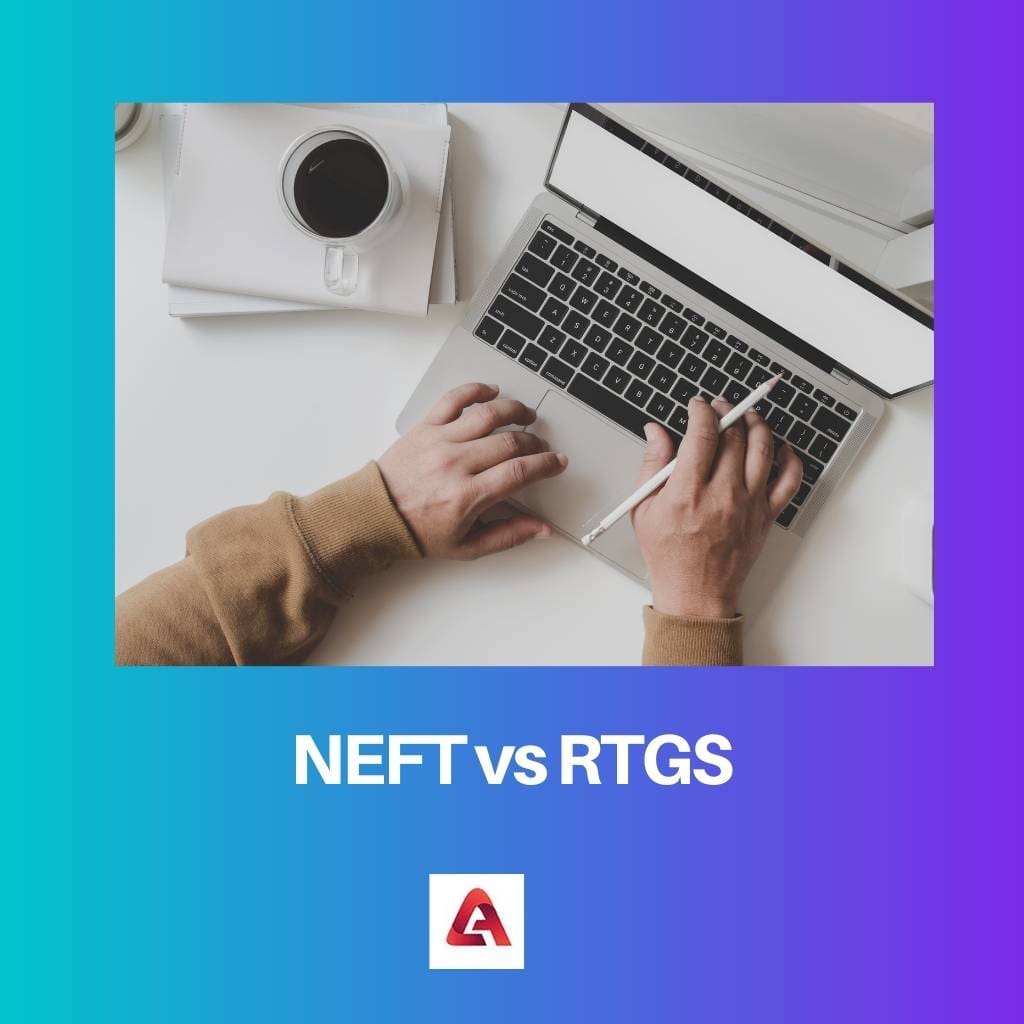Electronic transfer of money is growing rapidly due to its speed, safety, simplicity, and ease with the progress of technology.
Key Takeaways
- NEFT stands for National Electronic Funds Transfer, while RTGS stands for Real-Time Gross Settlement.
- NEFT is used for transferring funds up to a certain limit, while RTGS is used for transferring large sums of money in real time.
- NEFT settles transactions in batches, while RTGS settles transactions individually and in real time.
NEFT vs RTGS
NEFT (National Electronic Funds Transfer) is a payment system utilized in India that enables individuals and businesses to transfer funds between banks electronically. RTGS (Real-Time Gross Settlement) is another payment system in India that allows for large-value real-time transactions.

Neft, also known as National Electronic Fund Transfer, is an online payment system. It lets the users transfer funds from one bank account to another.
RTGS is also known as Real-Time Gross Settlement. It is an electronic system that enables the transfer of funds in real time.
Comparison Table
| Parameters of Comparison | NEFT | RTGS |
|---|---|---|
| Function | NEFT is an electronic system that enables the transfer of small to large sums of money across India. | RTGS is an electronic system that allows the transfer of large sums of money in real-time. |
| Transfer limit | It requires a minimum transfer value of Rs 1. | It requires a minimum transfer value of Rs 2 lakh. |
| Speed | It can take up to around 12 hours to complete a transaction. | In Rtgs, transactions happen within seconds. It is considered the fastest mode of transferring funds. |
| Usage | It is used for small transactions. | It is used mainly for transactions that are of high value. |
| Introduction | It was introduced in November 2005. | It was introduced in March 2004. |
What is NEFT?
National Electronic Funds Transfer(NEFT) is an electronic system to facilitate the transfer of funds between two bank accounts.The process involved in the Neft transaction are:
Step 1: Use your login ID and password to log in to your online bank account.
Step 2: Go to the Transfer Section of the NEFT Fund.
Step 3: Enter the recipient’s name, bank account, and IFSC code.
Step 4: Start an NEFT transfer after the beneficiary is successfully added. Enter the amount and send.
The only requirement is that the depositor and recipient bank accounts should support NEFT transfer. NEFT transfer can be made by an individual, a firm, or a company.
NEFT transactions offer several benefits. Some of them include
- Electronic transfer of funds, i.e., physical presence, is not required
- Simple and easy to use
- Quick and efficient as payment confirmation can be received through SMS or email within minimal time.
- Minimal to no chances of fraud as it is a highly secure method.

What is RTGS?
Real-Time Gross Settlement(RTGS) processes the transaction in real time. Requirements of RTGS transactions:
- Bank account
- Minimum transaction limit of Rs 2 lakh
- Transactions should be processed within India
Transfer of funds through online mode requires no additional charges. RBI, in July 2019, waived all the charges in RTGS transactions. The process involved in RTGS transactions through online mode:
Step 1: Log in to net banking
Step 2: Add details of the recipient account
Step 3: Go to the Transfer tab of RTGS Funds
Step 4: Choose the required amount to be transferred
Step 5: Accept the terms mentioned
Step 6: Send the online form for RTGS
Following the above-mentioned steps, it will enable the user to transfer funds hassle-free. RTGS transactions are managed by RBI, and hence once the transaction has been processed, it cannot be reversed.

Main Differences Between NEFT and RTGS
- NEFT is slower than RTGS as NEFT transactions happen in hourly batches as opposed to real-time basis.
- NEFT transactions operate 24*7, even on holidays, whereas RTGS transactions operate only during working hours.
- https://www.emerald.com/insight/content/doi/10.1108/JMD-04-2017-0144/full/html
- https://www.indianjournals.com/ijor.aspx?target=ijor:jcmt&volume=7&issue=1&article=012

The introduction of NEFT and RTGS systems has revolutionized electronic fund transfer, providing users with secure and efficient options for different transaction types. The table comparing NEFT and RTGS parameters is particularly insightful, offering a clear overview of their distinct characteristics and applications.
Indeed, the comparison table is beneficial in highlighting the key differentiators between NEFT and RTGS, enabling users to make informed decisions based on their specific transaction requirements. Understanding the operational facets of both systems is crucial for a seamless fund transfer process.
I completely agree! The comparison table provides a comprehensive understanding of the functionality, usage, and speed, making it easier for users to differentiate NEFT and RTGS for their fund transfer needs. This detailed insight contributes to informed and effective use of these systems.
The electronic transfer of money has become crucial in the financial landscape, with the NEFT and RTGS systems in India providing effective, secure, and quick transactions for both individuals and businesses. NEFT operates to facilitate transactions of small to large sums of money while RTGS ensures real-time transfer of large sums. Both systems are essential for meeting the different requirements of the banking sector.
I agree with the importance of electronic transactions and NEFT and RTGS in facilitating safe and secure money transfer. Their different transaction processes and limits are crucial in providing options for the varying financial needs of users.
NEFT and RTGS both play a vital role in facilitating fund transfer in India, catering to different scales of transactions. NEFT is accessible for smaller transactions with its lower minimum transfer value, while the RTGS system is dedicated to managing quick real-time transactions. Understanding their distinct features and processes is essential for efficient use of these systems.
Well said! NEFT and RTGS serve different transaction purposes, with NEFT suitable for small-scale transfers and RTGS designed to handle larger sums efficiently. The clear understanding of these systems is crucial to ensure secure and timely fund transfers.
The functionality and features of NEFT and RTGS provide a comprehensive framework for electronic fund transfer. It is important to recognize the limits and speed of each system to utilize them effectively for different transaction volumes, ultimately contributing to a seamless and secure fund transfer experience.
Absolutely, the key differentiators of NEFT and RTGS, such as transfer limit and speed, are essential considerations for individuals and businesses when selecting the appropriate system for fund transfer. It is valuable to understand the unique attributes of each system to make informed financial decisions.